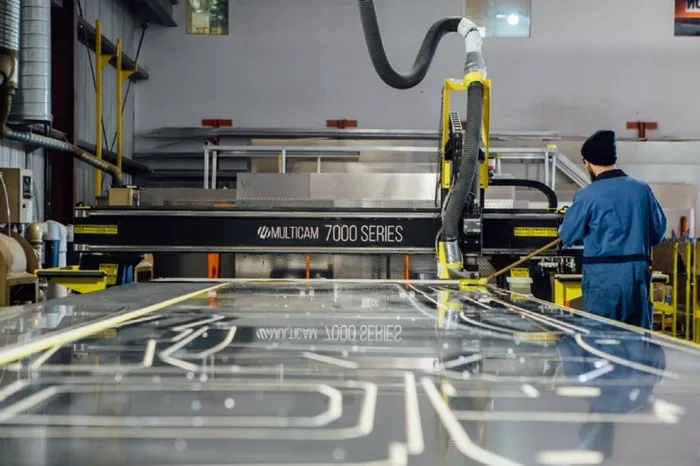Kingfisher Boats, a Canadian company, has been making welded aluminum hull boats since 1959. Due to changes in aluminum prices, the company looked for better software solutions. In 2008, they purchased JetCAM Expert CAD/CAM software, which included high-performance nesting (HPN) and a single postprocessor for their ESAB plasma cutter. Later, they added a Multicam router post in 2015 and a second one in 2017. The ESAB plasma cutter was retired in 2024.
By the time Bob Hackl became the software manager in January 2024, Kingfisher Boats had already used JetCAM for 16 years. Hackl, who previously operated CNC routers, had little experience with CAD/CAM or nesting software but quickly learned the system. He said, “I found it very easy to learn the basics of JetCAM.”
When importing CAD files, JetCAM’s Single Component Automatic Processing (SCAP) allowed fast and automatic importing of DWG files and applied tooling automatically for both routers. Hackl explained, “I just enter the source and destination folders, specify the part thickness, and click Go.” The software can process entire directories without more input. JetCAM Expert saves tooling settings for each machine at the component level. This means parts can be set up for multiple machines automatically and are ready for nesting and NC code generation on any machine.
The automatic tooling feature manages all routing tasks without user input during CAD import. This includes multi-depth routing, scribing, partial depth cutting, and corner pocketing. These settings are configured once and then applied automatically.
Hackl also noted the challenges posed by fluctuating aluminum prices, which ranged from $1,600 to over $4,000 per tonne between 2020 and 2022. He said Kingfisher benefits from HPN’s time-based nesting approach. This allows him to decide whether to focus on efficiency or speed. “HPN is set to run for 5 minutes by default, but I often stop it in under 3 minutes because the nests are usually efficient by then,” he said.
Kingfisher also uses both static and dynamic nesting. Static nests, which are reused because many parts repeat, offer good material efficiency. Dynamic nests help when orders change or when parts are scrapped during production, giving the company flexibility. Hackl said, “We mostly use static nesting, but creating new nests dynamically is no problem when needed.”
When Hackl moved from CNC operator to programmer, he had little experience with nesting. Besides the software’s ease of use, he also used JetCAM University, which offers hundreds of free tutorial videos online. After watching over 90 videos, he said, “JetCAM University was very informative.” He also praised support from NestOne Solutions, JetCAM’s local reseller, saying, “They have always been helpful, answering questions quickly and thoroughly.”
With more than 75 years of manufacturing experience, Kingfisher is confident JetCAM will help the company grow. Hackl concluded, “JetCAM is easy to learn, especially with the university resources. It is a powerful program with strong support, and I have never encountered a problem it couldn’t solve.”

